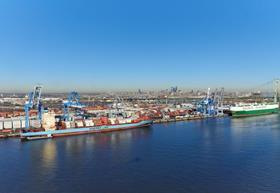
Fyffes has announced its first vessel will arrive this week at The Packer Avenue Marine Terminal at the Philadelphia Regional Port Authority, a strategic move that it says will offer room for additional growth.
'With Fyffes' recent expansion in North America, we switched terminals at the Port of Philadelphia to support our growth strategy,' explained Juan Alarcon, chief executive of Fyffes North America, tropical division. 'The Packer Avenue Marine Terminal will allow us to be 100 per cent containerised, and give us greater flexibility on how we serve our customers.'
According to Fyffes, The Packer Avenue Terminal has expanded in volume and invested in infrastructure to accommodate new business over the past year. The terminal can now handle more containers, new cranes, additional reefer plugs and reach stackers, and refurbishment of warehouses.
“The Fyffes brand and reputation for quality has well been established throughout Europe,' said Jeff Theobald, executive director and CEO of the Philadelphia Regional Port Authority. 'In Philadelphia their recent move to utilise the Packer Avenue Marine Terminal signals that same commitment to quality is being expanded into US markets.
“The recently announced major capital improvements being made by the Philadelphia Regional Port Authority and its operator, Holt Logistics, will ensure that US consumers will know Fyffes fruit and produce as a first choice for their families’ tables,' he added.
Fyffes said that its new terminal location is key to its strategy in maintaining the integrity of the cold chain, allowing the company to import top-grade produce from five different countries, rather than two at its previous terminal.
The Packer Avenue Terminal is a state-of-the-art terminus for Fyffes' carrier of choice, Sealand. According to the group, hubbing these South and Central America services together at one location will provide economies of scale and ensure the highest standards of quality for Fyffes.
Fyffes is one of the top ten shippers using the Port of Philadelphia, with many large produce industry players also moving through the Delaware River system.



